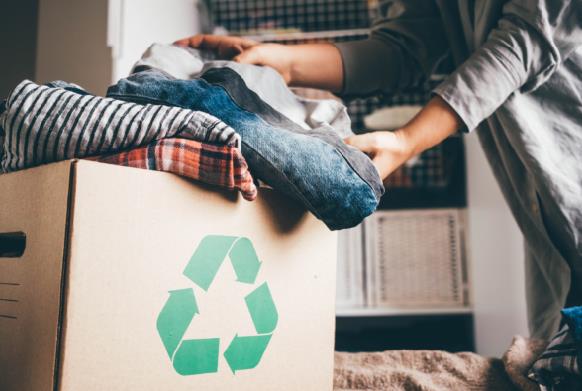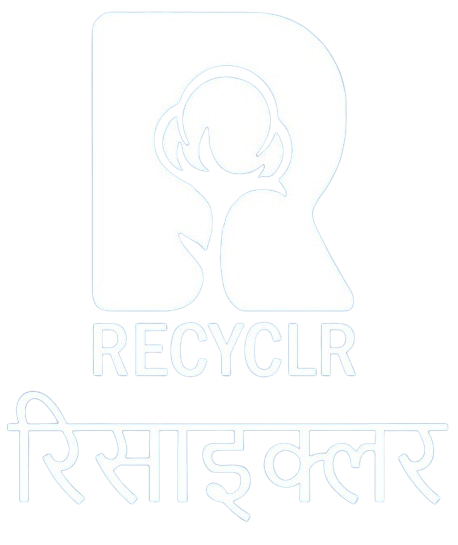Circular Economy: How Indian Textile SMEs Can Lead the Way
The textile industry in India is at a turning point. With the rise of sustainability and environmental consciousness, the need for circular economy practices is more urgent than ever. Indian textile small and medium enterprises (SMEs) have the potential to lead this transformation. Through the support of organizations like GATS (Global Alliance for Textile Sustainability), many SMEs are already embracing circularity, paving the way for a more sustainable future. But what exactly is a circular economy, and why is it so crucial for the textile industry?

What is a Circular Economy?
A circular economy is an economic model that prioritizes the reuse, recycling, and regeneration of materials to minimize waste. Unlike the traditional linear economy, where products are made, used, and discarded, a circular model ensures that materials are kept in use for as long as possible, reducing both environmental impact and resource consumption.
Key Principles of Circularity in Textiles
1. Reduce Waste: Designing products with longevity in mind, minimizing textile waste during production.
2. Reuse Materials: repurposing fabrics and clothing for new products.
3. Recycle: Converting textile waste into raw materials for future use.
4. Regenerate: Using biodegradable and renewable materials to close the loop.
Success Stories: Indian SMEs Leading the Circular Revolution
Several Indian SMEs are at the forefront of this movement, setting an example for the rest of the industry. With the guidance and support from GATS, these businesses have successfully integrated circular practices into their operations.
1. EcoTex Industries: Reducing Waste and Embracing Upcycling
EcoTex Industries, a medium-sized textile manufacturer based in Gujarat, used to generate significant textile waste during the production process. With GATS’ support, they restructured their production methods to reduce waste and began upcycling fabric scraps into new products, such as home décor items and accessories.
Their innovative approach has not only reduced their environmental impact but also opened up a new revenue stream. Today, EcoTex is a leader in sustainable textiles, with customers worldwide recognizing the quality and sustainability of their products.
2. GreenWeave: Turning Textile Waste into Raw Materials
GreenWeave, an SME from Tamil Nadu, faced a common challenge: excess textile waste. Instead of sending this waste to landfills, they partnered with GATS to explore recycling solutions. With guidance on new technologies, GreenWeave implemented a closed-loop system where textile waste is broken down and reused as raw material for future production.
This shift not only eliminated their waste output but also reduced their reliance on virgin materials, cutting costs and increasing profit margins. Their story showcases how circularity can bring long-term economic benefits alongside environmental advantages.
The Long-Term Economic and Environmental Benefits of Circular Practices
Adopting circular economy practices offers a multitude of benefits for textile SMEs, both in terms of profitability and environmental impact.
Economic Benefits of Circularity
- Cost Reduction: By recycling and reusing materials, SMEs can reduce the costs associated with sourcing new raw materials.
- New Revenue Streams: Upcycling and repurposing waste materials open up opportunities for new product lines.
- Increased Market Demand: Eco-conscious consumers are increasingly choosing sustainable products, giving SMEs a competitive edge in the global market.
- Resilience: Circular practices make SMEs less reliant on volatile raw material markets, ensuring more stable and predictable costs.
Environmental Benefits of Circularity
- Waste Reduction: Circular practices dramatically reduce the amount of waste produced by the textile industry.
- Resource Conservation: By reusing and recycling materials, SMEs help conserve valuable resources, such as water and raw materials.
- Lower Carbon Footprint: Recycling and repurposing materials reduce the need for energy-intensive processes involved in producing new textiles, leading to a lower carbon footprint.
- Biodiversity Protection: Using biodegradable and renewable materials helps protect ecosystems from the harmful effects of waste disposal and chemical usage.
GATS: Supporting Indian SMEs on Their Circular Journey
At GATS, we believe that small and medium enterprises are the key to transforming the Indian textile industry. Our goal is to provide these businesses with the tools, knowledge, and partnerships needed to adopt circular economy practices.
How GATS Helps SMEs Embrace Circularity
- Training & Education: We offer workshops and training programs to help SMEs understand the principles of circularity and how to implement them.
- Partnerships: We connect SMEs with innovative technology providers who can help integrate recycling and upcycling into their production processes.
- Support & Guidance: Our team provides ongoing support to ensure that SMEs can successfully transition to circular business models, with measurable benefits.
Conclusion: The Future is Circular
The future of the textile industry is circular, and Indian SMEs have a unique opportunity to lead the way. By embracing circular economy practices, these businesses can not only reduce their environmental impact but also increase profitability and resilience in an increasingly eco-conscious market.
With the support of GATS, SMEs across India are already seeing the benefits of circularity. By working together, we can create a more sustainable, responsible textile industry that benefits both people and the planet.
